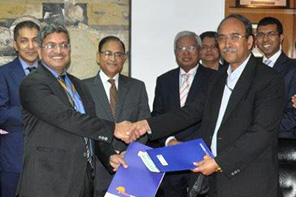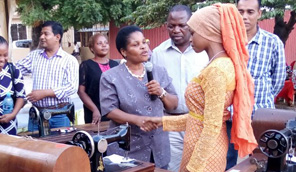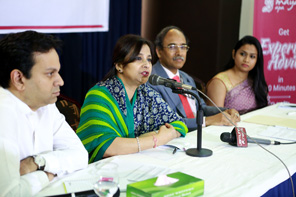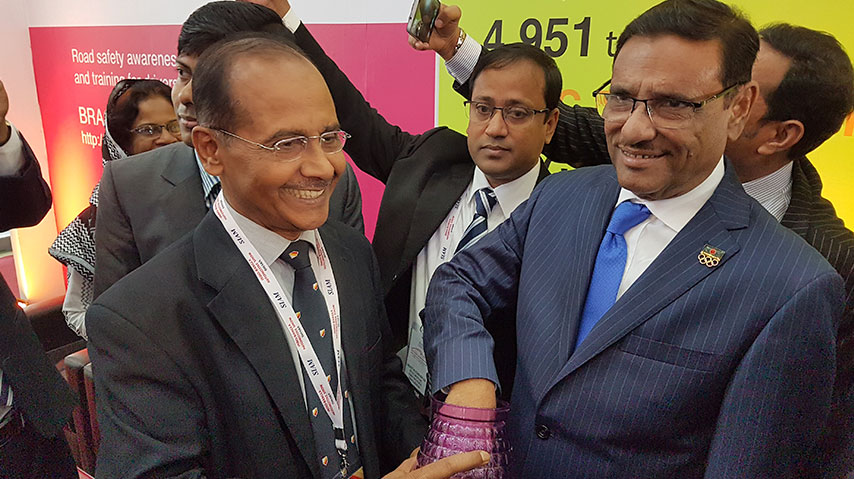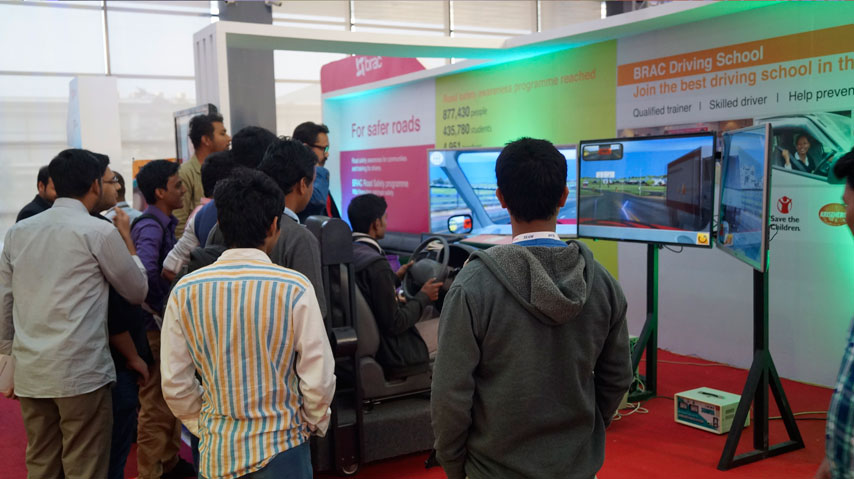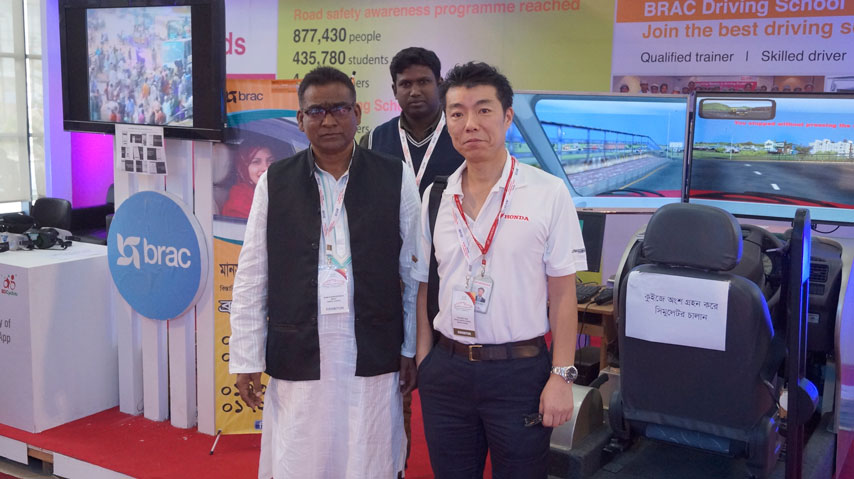
BRAC
Microinsurance for 5 million microfinance clients
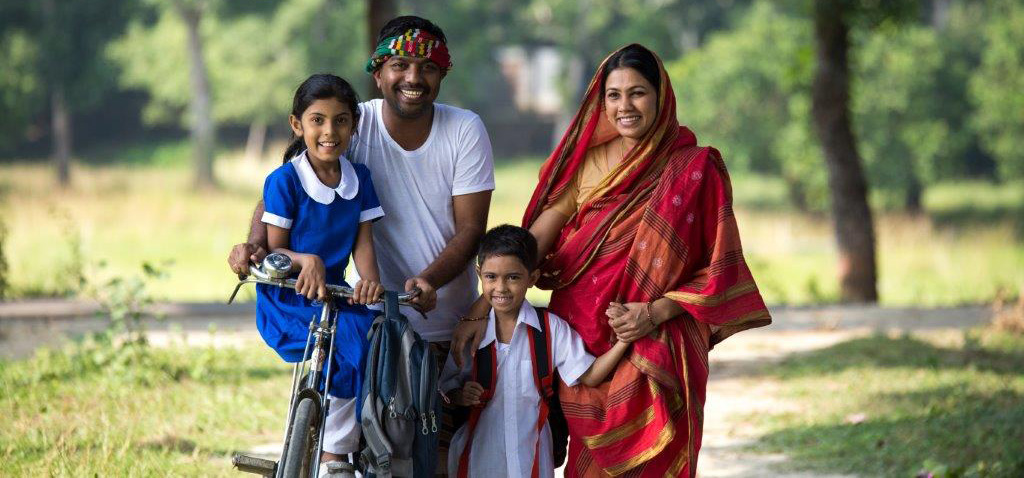 Introducing microinsurance for our microfinance clients
Introducing microinsurance for our microfinance clients
We have partnered with Guardian Life Insurance Limited to offer our first microinsurance product - credit shield insurance to our 5 million microfinance clients. The product is targeted towards the lower-income population of Bangladesh to protect them and their livelihoods in the event of death of a household member or the earner.
Our microfinance clients have been using credit and savings products to access opportunities, plan for the future, and cope with shocks. However, some events are hard to predict, and even harder to cope with.
Every year we experience more than 22,000 deaths of microfinance clients or earning members in their families.
For households that face this adversity, credit shield insurance fits in as an important safety net to provide an alternative to emergency strategies for protecting household finances and promote resilience.
When microinsurance was piloted a year ago, we learnt that insurance penetration is low due to negative preconceived perception towards it and lack of awareness. In Bangladesh, traditional insurance companies mainly focus on the upper and middle-income population leaving a large portion of the total population unserved. To fill that gap and best meet the needs of our clients and their families, credit shield insurance has been designed to be accessible, affordable, and easy to use.
Any of our microfinance clients can avail credit shield insurance when applying for their loan by making a minimal one-time premium payment set at 0.3 per cent of the loan amount for individual coverage or 0.7 per cent to cover dual members of a household. This insurance product comes with a cash benefit from BDT 10,000 (USD128) to BDT 20,000 (USD256) to cover the costs of funeral and other arrangements. Credit shield insurance also covers the remaining loan outstanding in full and allows savings to remain intact for the family to meet their emergencies.
To ensure hassle free, fast settlement of claims, only two documents of proof is required from the client end – the death certificate issued by doctor/local authority and a copy of National ID. Moreover, our dedicated team and customer service assistants are beside our clients to deal with queries and concerns every step of the way.
Commenting on the launch of credit shield insurance, Shameran Abed, director of BRAC’s microfinance and ultra poor programmes said, “Poor households are particularly vulnerable to sudden shocks, and nothing is more debilitating than losing an earning member of the family. With the launch of this product, we are taking one more step towards helping our borrowers become more resilient so that they can withstand such shocks.”
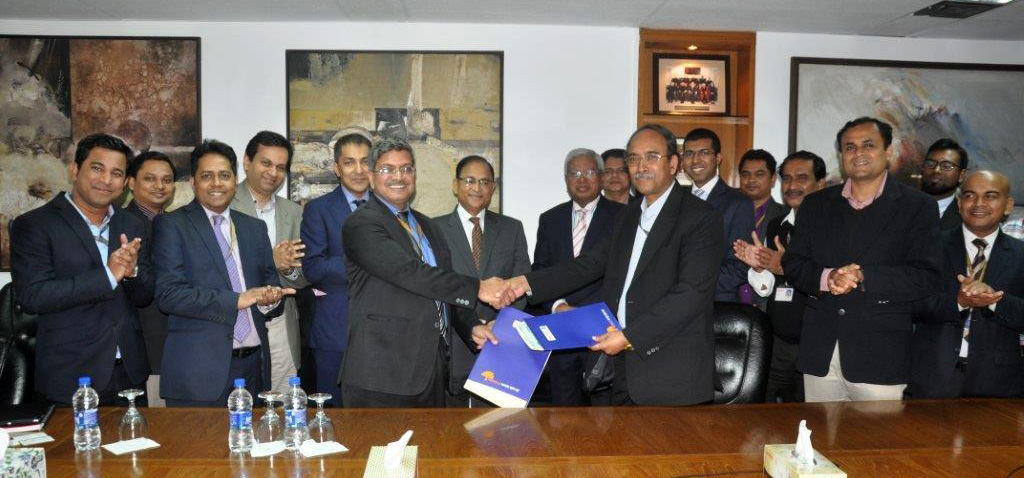
The service legal agreement (SLA) signing ceremony of BRAC and Guardian Life Insurance Limited was held at BRAC Centre on 12 January 2017. BRAC’s founder and chairperson, Sir Fazle Hasan Abed; executive director, Dr Mohammad Musa; senior director, Asif Saleh; director of microfinance and ultra poor programmes, Shameran Abed; chief executive officer of Guardian Life Insurance Limited, M M Monirul Alam, and managing director of Square Pharmaceuticals Limited were present at the ceremony.
About Guardian Life Insurance Limited
Guardian Life Insurance Limited (GLIL) started its business activities in 2014. It is the fastest growing life insurance company in Bangladesh. GLIL aims to provide the best insurance products and services to the people of Bangladesh. To know more about Guardian Life Insurance Limited, please visit http://www.guardianlife.com.bd/
BRAC provided 50 sewing machines to girl entrepreneurs in Tanzania
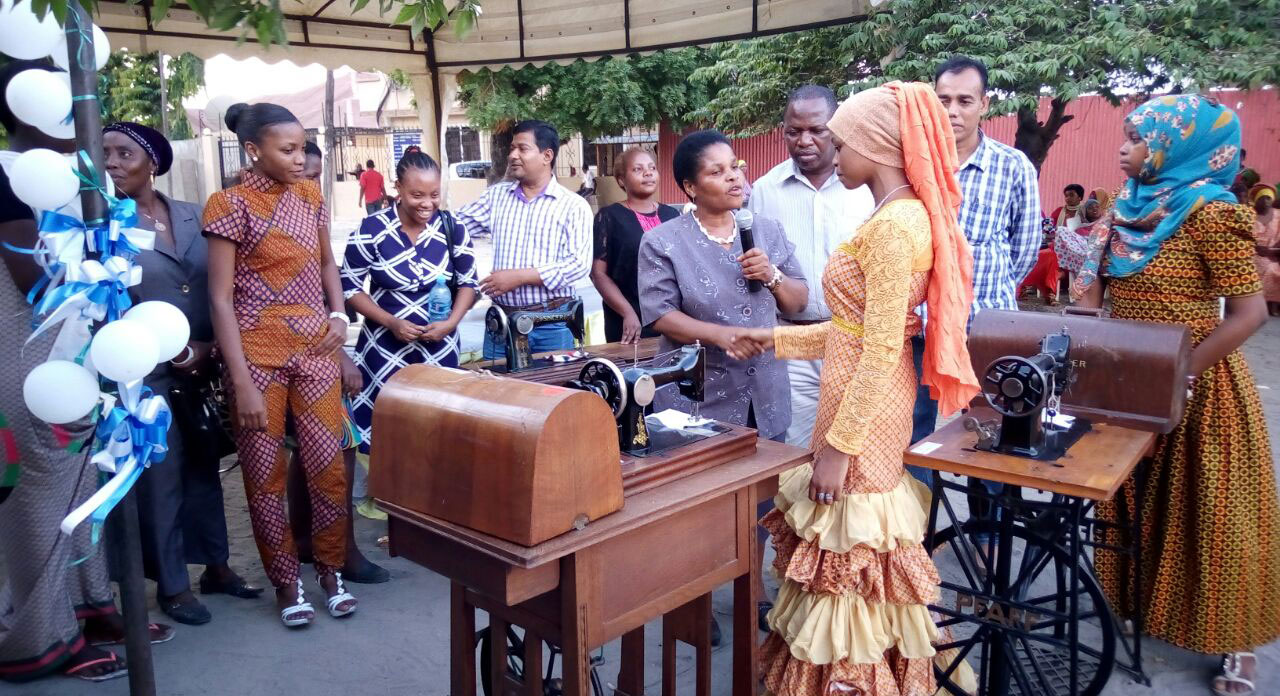
BRAC, through their Empowerment and Livelihood for Adolescent (ELA) project, has rolled out a plan to support 50 outstanding girls with sewing machines across four regions in Tanzania, namely Dar es salaam, Mbeya, Iringa and Dodoma.
The support was extended to girls who were trained by BRAC under the ELA initiative and demonstrated commitment to use their skills to empower more girls around their community.
The ceremony was attended by chief guest Ms. Anna Marika, a youth officer from Temeke Municipality where BRAC has established 10 girls clubs. Ms. Marika commended BRAC’s efforts to empower adolescent girls, and thanked the BRAC for supporting girls living in difficult environments. She encouraged the community to join hands in supporting girls’ initiatives since their economic liberation will be felt throughout the community, and how an empowered girl child is the best single investment any society should consider.
BRAC started the ELA project in 2013 to create safe space for girls in Tanzania where they can meet their peers and share experiences, challenges and discuss new ways to tackle them. BRAC is currently running 180 girls club in four regions namely Mbeya, Iringa, Dodoma and Dar es salaam.
The clubs provide adolescent girls the opportunity to learn new life skills which empower and support them to launch and implement their own business ideas. The girls are also given livelihoods skills in tailoring, hairdressing, and agriculture so they can choose a sector they are interested in. The ELA programme focuses on improving the quality of life of adolescents, especially vulnerable girls through two objectives of social education and financial empowerment.
The programme is designed to socially and financially empower vulnerable teenage girls aged between 11 to 19 years.
BRAC investing in mobile app Maya Apa
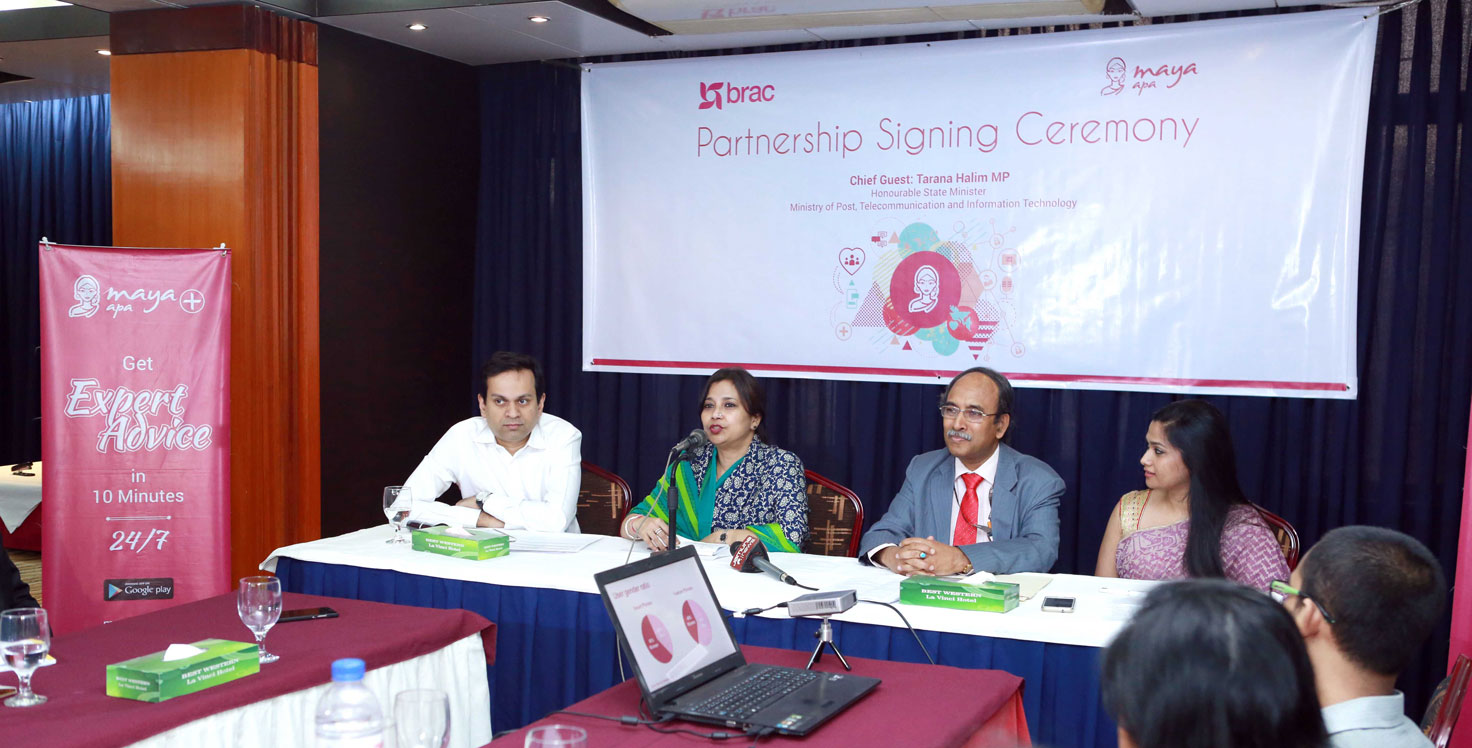
BRAC is going to scale up its investment in mobile app Maya Apa to ensure quality information and counselling service delivery for a greater number of people. Besides, BRAC’s urban development programme will implement a pilot project where Maya Apa app will be used to give services to 50,000 women garment factory workers.
This new BRAC-Maya initiative was announced today on Wednesday (February 15) with a signing ceremony organised at a hotel in the Dhaka city.
Maya Apa is a virtual platform that anyone anonymously can access any time for counselling and answers to queries on daily life issues including health, psychosocial and legal matters. Once the question is asked it is redirected to the profile of relevant experts and the answer appears within three hours maximum. Statistics show that since the app's launch in February 2015 around 150 thousand queries were received and answered. Currently, over 10,000 users access it daily.
Tarana Halim, state minister for posts and telecommunications, was present at the ceremony as the chief guest. Asif Saleh, senior director, strategy, communications and empowerment, BRAC, moderated the event while Dr Muhammad Musa, executive director, BRAC, briefed on the mission and objective of the partnership. Ivy H Russell, founder of Maya, spoke on the activities of Maya Apa. Dr Muhammad Musa and Ivy H Russell signed the agreement on behalf of their respective organisations.
‘Today's event is a stark example of how ICT in Development is the next frontier of sustainability. BRAC and Maya Apa partnership will help both organisations reach out to the millions in Bangladesh to provide wellbeing and healthcare at their fingertips’, said chief guest Tarana Halim. ‘I am very happy to be a part of this ceremony, especially seeing a women-led technology start-up like Maya Apa, pushing barriers to providing affordable healthcare and wellbeing, makes me proud. I would like to wish both BRAC and Maya Apa all the best for the future and hope that the telecom service providers come forward to help with services like Maya Apa’, she further said, adding, BTRC would always stand by such social initiatives.
The organisers said, they aim at connecting the people of Bangladesh to the current digital revolution of the world. Anyone with just a mobile number can access Maya Apa. They can email their queries also. As a result, the users can easily keep themselves anonymous. Till now 60 per cent of the users are women, while the rest 40 are men. The service is available through any Android-based smart phone, web or SMS. The initiative will enable BRAC-Maya group to reach information and counselling services to people both in the rural and urban areas. The service can be accessed through download of this link https://goo.gl/LTW2OA
Having briefed the context of this partnership agreement, BRAC executive director Dr Muhammad Musa said, 'Our objective is to provide better quality services to more people. By integrating technology into our programmes we want to expedite the delivery of BRAC’s services to the marginalised people.'
Maya founder Ivy H Russel said, 'The Maya Apa team and I could not be more thrilled to receive this kind of commitment from BRAC. Aside from the investment itself, BRAC brings unparalleled expertise and reach in taking services to “last mile” users. Our team will now have the resources in place to drive greater awareness for Maya Apa as well as invest more heavily in improving the service by developing our capabilities in machine learning, natural language processing, and mobile user experience.'
Relevantly, a service titled 'Maya Apa Plus' has already been launched under a partnership with mobile operator Robi. Users will have their queries answered in ten minutes through this service.
BRAC, VisionSpring expand new eyeglasses market for BD poor
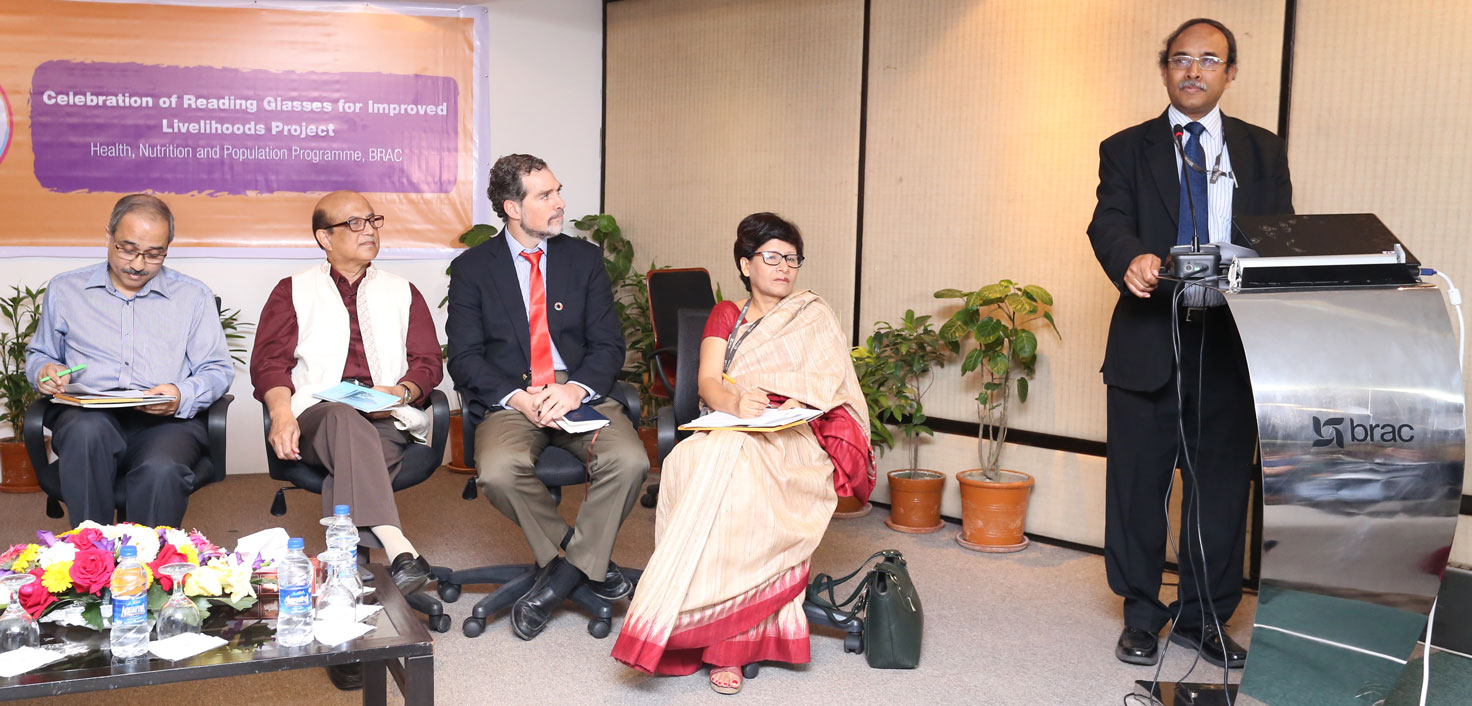
VisionSpring and BRAC provided one million pairs of affordable eyeglasses to low-income customers, achieving major milestones both in scaling a social entrepreneurship model, and in expanding access to vision services in Bangladesh.
The Reading Glasses for Improved Livelihoods Programme, which began in 2006, has seen marked success, contributing to significant health and economic outcomes.
For low-income earners, eyeglasses are a simple, affordable tool that sustains productivity and earning power. Since the programme's start, it is estimated to have contributed to $110 million in increased income at the household level, based on an analysis of a study conducted by the University of Michigan. With a philanthropic investment of $3.50 per pair, the return on investment is significant.
Eyeglasses can prevent middle-aged workers from experiencing any drop in efficiency and productivity associated with the eye's natural aging. Without the ability to focus up close, mechanics, barbers, tailors, teachers, artisans, and many others whose work requires clear near vision, lose years of income earning potential.
BRAC and VisionSpring developed an innovative social entrepreneurship model to reach these low-wage earners, selling low-cost reading glasses through BRAC's network of community health workers (locally known as Shasthya Shebikas).
They offer free eye screenings, and have created a referral system for nearly 610,000 customers who need higher-level care for cataracts and other eye conditions.
Living in the communities where they work, the female health workers reach customers in the most remote areas of Bangladesh through vision camps and home visits, according to Marketwired.
Marketwired founded in 1993 and incorporated in the US in 1999, is a press release distribution service headquartered in Toronto, Ontario, Canada.
For 90 per cent of customers, this is their first pair of glasses. The community health workers earn a modest commission from the sale of each pair of eyeglasses; since the programme's inception, they have earned a total of $450,000 in supplemental income.
"Partnerships are central to our success. Our collaboration with BRAC exemplifies the power of bringing together two organizations that share a common purpose and ethos and possess complementary core competencies. We feel honored and privileged to have found such a wonderful long term partner," Marketwired quoted VisionSpring Founder Jordan Kassalow in release on Sunday.
Meanwhile VisionSpring, BRAC, supporters, partners in the social enterprise, and global health community members gathered in the Bangladesh capital Dhaka on Sunday and celebrated the success of the partnership and honoured the health workers and programme organisers who had brought improved vision to people in 61 of 64 districts across Bangladesh.
Greening urban transport system

Urban transport is still poor in developing countries compared with the developed countries. For a sustainable and green solution to the problem, it requires an integrated initiative between different stakeholders and beneficiaries – citizens, policy makers, policy implementers, researchers/experts and donors, writes Polin Kumar Saha
THE importance of greening the transport system is very crucial for sustainable development since commuting is an integral part of our daily lives irrespective of our social differences. Moreover, the troubles that one face in conventional transport system is a critical concern for developing countries. It is particularly concerning for a rapidly growing city like Dhaka. A broad range of sustainability issues including environmental sustainability (global warming, degradation, fossil fuel burning and emissions) and social sustainability (human satisfaction, road safety and health — physical, mental, emotional, spiritual), and economic stability (cost and benefit over environmental and social violations) are also matter of our larger concerns. In fact, the transport sector is responsible for 23 per cent of the global greenhouse gas emission with over 90 per cent of all road transport depending on fossil fuel. Therefore, road transport majorly contributes in the total greenhouse gas emissions. The projection of this trend will increase in future if we don’t become adequately aware and incorporate green initiatives in our urban transport system.
In this current context of urbanisation, what should we do to address the problem? The urban transport is still poor in the developing countries compared with the developed countries. For a sustainable and green solution to the problem, it requires an integrated initiative between different stakeholders and beneficiaries — citizens, policy makers, policy implementers, researchers/experts and the donors. Our experiences show that many technical solutions proved successful in developed countries are not suitable for our cities. In terms of greening the transport system, research shows that we have to review and rely more on non-technical solutions than the technical solutions. Here we can briefly elaborate these two dimensions of transport development in the greening process.
Non-technical review suggests that behavioural or attitudinal changes must be characterised by increasing walking space, cycling and the preferred transit mode. For environmentally friendly cities, these are the vital issues that contribute to the composition of a green transport system. The methodological approaches to work for a green travel style is to incorporate the mood of walking, cycling and transit which make up four strategies mainly: changing the pattern of land use in promoting the space for walking and cycling, giving priority to the public transport, restricting car buying and using, and implementing rules and regulations through good governance. It is true that we have seen already some good policies and strategies on these reviews, but more investigation is needed to assess our limitations and solve the problem by setting up priorities. Some policy areas of interventions include the restriction of private cars, encouraging group transport facilities for schools/institutions, restrictions on private use of car such discourage more than one car for a family, standardise public transport and availability to all classes of citizens, scheduling public transport in accordance with school, college and office schedules. Similar kind of policy initiatives has seen great success in Vienna, Austria. In the period between 1993 and 2014, Vienna was able to reduce car dependency from 27 per cent to per cent.
Contrastingly, in our country we are increasing our dependency on cars. Another glowing example is Vancouver, Canada. In 2007, the city decreased vehicle kilometre driven per person as they increased their awareness and practices in walking, cycling and public transit. The key to the success is a common understanding and changes in land-use policies that encourage an environmentally sound public transport system.
In recent years, environmentally friendly public transit relies on a green transport system for example green buses, bikes, taxis, trains. Green transport reduces people’s dependency on conventional fuel use in their vehicles and decreases pollution in terms of greenhouse gas emissions.
Therefore, public transport should be prioritised. The noise and air pollution should be taken into account when designing and implementing public transport system. In our context, the following measures can be taken: electric vehicles, such as electric trains, bikes, buses can be promoted (but the electricity must come from renewable resources); introducing multiple occupant vehicles; introducing hybrid bus, taxies, commuter vehicles; developing road infrastructure including bus bay, footpath, underpass, overpass; introducing large capacity of public transport (big buses, metro, double-decker); introducing auto traffic signals and central monitoring systems for maintaining traffic rules and regulations and reducing traffic congestions through different initiatives. It is also important to shift political rallies, events, exhibition from the centre of the city. Dhaka city often face serious because of VIP movement and VIP offices. It is time that the office bearers take serious note on how their mobility city-wide transport system. For example, the location of Bangladesh prime minister’s office often makes huge traffic congestions. This, in fact proves how ill developed traffic system can harm the public not just economically by wasting their time, but also psychologically.
Taking into account the technical and non-technical measures to improve public transport system, it would appropriate to turn towards green technology and initiatives. A turn towards greening the system would also ensure the sustainability of the transport system. We have indeed many challenges to overcome. However, a coordinated effort between politicians, stakeholders, researchers and transport planners could make it happen. To summarise the issue, we definitely need to restructure and prioritise our transport network that includes walking, cycling, and public transport facilities. Every single step can push us unanimously to identify the improvement of our present situation.
Polin Kumar Saha is a senior research associate and sustainability professional at BRAC Research and Evaluation Division.
BRAC students make nano satellite
 Brac University students-Abdulla Hil Kafi, Maisun Ibn Monowar and Raihana Shams Islam Antara along with their mentors.
Brac University students-Abdulla Hil Kafi, Maisun Ibn Monowar and Raihana Shams Islam Antara along with their mentors.
Three Brac University students recently paved Bangladesh's first path for having a footprint into the space by developing the first nano-satellite of the country. The low-cost small satellite, categorized as nanosat, has been designed, developed and assembled by Brac University students-Abdulla Hil Kafi, Maisun Ibn Monowar and Raihana Shams Islam Antara.
Kyushu Institute of Technology (KIT) also known as Kyutech-one of the best technology universities of Japan collaborated with Brac University in developing the first nanosat. As part of its academic endeavours, Brac University took this initiative of starting space and remote sensing research in collaboration with Kyutech and SPARRSO almost three years ago.
This cross-border interdisciplinary satellite project was supported by Japan for four non-space faring countries and was titled "Joint Global Multi-Nation BIRDS Satellite" or "BIRDS Project". Brac University considers this to be a milestone for "Space Technology Transfer" since it is the first time a Bangladeshi university is working in the field of satellite engineering and technology.
During a ceremony held at KIT, Japan on Wednesday, Dr Syed Saad Andaleeb, Vice Chancellor of Brac University received the nanosat from Kyutech President Professor Yuji Oie and Professor Mengu Cho, Director, Laboratory of Spacecraft Environment Interaction Engineering, Kyutech.
At the sometime, a live video conference was organized at Bangladesh Telecommunication Regulatory Commission (BTRC) in Ramna, where the BTRC Chairman Dr Shahjahan Mahmood joined to observe the nanosat receieving ceremony in Japan.
Professor Dr. A. A. Ziauddin Ahmad, Chairperson, Department of Mathematics and Natural Sciences, BRACU, presided over the ceremony in Dhaka and gave a brief description of Brac Onnesha..Brac Onnesha is shaped as a cube of 10cm edge capable of completing one orbit 400 kilometres above the ground in 90 minutes and passing over Bangladesh four-six times a day.
Demonstrating the fucntionality of the nanosat through video conference from Japan, Abdulla Hil Kafi, now studying Applied Science for Integrated System Engineering in Kyetech, explained that the nano-satellite would be able to take high quality photographs of land to analyse vegetation, urbanisation, flood, water resources, forestry etc.
It will also allow relaying audio signals and attaining communication through HAM radio during emergencies and catastrophe and play the national anthem on days of national importance, observe space environment and monitor satellite location, he added.
Professor Mengu Cho of Kyutech said Brac Onnesha was easy to build and affordable and their prime objective was to educate the students so that they could go back to build one completely by themselves, presumably in October 2017.
6 organizations to watch among NGO Advisor's top-ranked 500
NGO Advisor's new annual ranking of the world’s top NGOs yields important and even unexpected insights for the development community. The list — published each year since 2011 — aims to identify the most impactful organizations in the world.
Some top performers are household names; others are little known even within the development community. The ranks can provide outside perspective on an NGO’s work and also share lessons about what’s working with the broader sector.
BRAC tops the rankings for the second straight year — they received the highest score out of a possible 1,400 against 165 criteria. NGO assessments draw on publicly available organization information, economic and financial data, human resources and governance and marketing and communications. Doctors Without Borders, The Skoll Foundation, Danish Refugee Council and Ashoka rounded out the top five.
The rankings are not about size. “We were more interested in showcasing the sense of creativity and innovation that is so unique in the nonprofit sector,” Jean-Christophe Nothias, editor-in-chief of NGO Advisor, told Devex. “Our policy was to make sure that the methodology would give enough weight to these ideas of innovation and creativity. Weighting transparency and governance as another leading pillar of interest for scoring was another key component.”
For example, the methodology enables startups to have a presence on the list through a softer rating process in the first three years of operation. Following that period, scoring gets tougher. The methodology has evolved over the past half decade to enable a broader definition of NGOs and incorporate academic rigor.
Still, put together, the organizations in the rankings have serious heft. “In 2015, the top 30 organisations of the rankings represented over $12 billion of net assets, 7 billions of yearly income, about 600 millions of surplus and nearly 2 million of employees,” Nothias said.
Several trends emerge from the data. Since 2013, NGOs with a technical edge have been making their presence felt in the rankings, according to Nothias.
The rankings also reveal that U.S. nonprofits, about 20 percent of those listed, are relatively fragile. “The U.S. entities in 2015 have suffered in financial terms, and for many, have lost ground in net assets, or are facing deficit,” Nothias said. Though he said this may recover in 2016, as private and institutional donors react to the election of President Donald Trump by supporting the NGO community.
NGO Advisor’s list also highlights how both large and small organizations can make an impact. To learn from them, Devex has selected six interesting entries in the top 500 with insights into what makes them NGOs to watch.
ACTED
France-based ACTED is the highest rated new entry this year, ranked at 33. The organization, which started in 1993, provides support to 34 countries and 8 million people through economic empowerment, education, emergency response, inclusion and microfinance programs with the support of more than 5,000 staff.
ACTED’s appearance in the rankings is thanks to an increased scope of actions and a growing budget, including support from institutional donors, including the U.N. and EU, Caroline Pasquier-Le Moulec, deputy communications manager for ACTED, told Devex. Since 2014, the organization has also been putting new policies into place for accountability and compliance to improve reporting and transparency of spending — an important factor in higher rankings for NGO Advisor.
ACTED’s strong focus on innovation is also important to their success, Pasquier-Le Moulec said. “Innovation in the activities we implement, innovation in the tools we are using for humanitarian aid, innovation in the way we are working with our partners. We are adaptable and reactive and we provide according to the context and according to the needs, while routing emergency and relief operations in long term sustainable programming.” Most recently in Haiti, for example, ACTED have been working to assist communities recovering from Hurricane Matthew to deliver sustainable and durable reconstruction solutions and rebuild more resilient homes to better withstand the impact of future natural disasters.
Action from Switzerland
Ranked 451 this year, Action from Switzerland is a newcomer to development. In 2015, the organization began as a Facebook Group established by Gabrielle Tan-Tay, who grew increasing frustrated watching people fleeing war and persecution only to be stuck in inhumane conditions at European borders.
“Dear FB friends, while it was heartening to read that some refugees got a warm welcome in Vienna and Munich, there are still many others still stuck at the stations (mainly Keleti) with only clothes on their backs and the single hope of moving onward their journey to a safe haven in order to rebuild their lives,” Tan-Tay said in her post. “With aid only trickling in from private Hungarian citizens and a few charity groups, frustration and desperation mixed with sleeping rough are what these people have to deal with on a daily basis. Enough is enough.”
Today, Action from Switzerland is providing support for vulnerable refugees with a focus on the Greek Isles.
Being a small and nimble organization is one of their strengths, according to Prageeth Jayathissa, Swiss coordinator for the group. “We are entirely funded through private donations, and as a result are able to quickly act with little overhead.”
Since entering Chios in early 2016, Action from Switzerland have worked with large NGOs to isolate the major problems facing refugees in Greece. Networking has been an important part in their impact. Action from Switzerland focuses on coordination and filling in the gaps in relief work.
“When we first entered Chios, we made contacts with the many large NGOs such as the UNHCR, Save the Children, and Praxis, and a group of smaller organizations such as the Chios Eastern Shore Rescue Team, and A Drop in the Ocean,” Jayathissa said. “We also were in close communication with many refugees in the camps. By doing so, we could carefully evaluate what is required and support each other where possible. Very often we see situations where multiple organisations are providing the same value without communicating with each other, thus resulting in confusion amongst the refugees that they are helping.”
BRAC
As the number one NGO for two years running, BRAC is big in both scope and impact. Founded in Bangladesh in 1972, BRAC today employs more than 100,000 people in 11 countries, with a total global expenditure of about $900 million to provide programs in education, gender, health care, microfinance and more. “BRAC has big numbers to show in terms of impact, but more than quantities data, BRAC is also incredibly agile, creative and efficient,” Nothias said.
NGO Advisor considers BRAC a key organization in the development of what they call “for-good systems” — systems that embody several entities including for profit and nonprofit “in order to drive change and have lasting impact.” By combining aspects of for profit and nonprofit business models, BRAC is a leading example of an NGO reducing their reliance on donor countries for funding.
Landesa
This is the second year that Landesa places in the top 10 NGOs, ranked ninth this year. The half-century-old organization works with governments and civil society actors to reform laws and policies to provide millions of rural women and men secure rights to land.
Chris Jochnick, CEO of Landesa, told Devex that Landesa works to great effect by “leveraging the power of governments and other critical actors” on land — one of the most challenging and vital issues for much of the world’s poor.
Landesa also attributes success to an organization structure that supports passionate, talented and hard-working people — and monitors results. “We have also benefited from our commitment to rigorous monitoring and evaluation across all of Landesa’s projects and programs,” Jochnick said. “Collecting good data on program outcomes allows us to build on our successes and learn from our failures — lessons that we hope can also be of benefit to the broader development community.”
Movember
Movember skyrocketed into public view for its campaign during the month of November urging men to grow moustaches and raise money through sponsorship in support and solidarity of men's health and early prostate cancer detection research in developing countries. NGO Advisor has also been watching closely, following the organization as it grows and boosts its impact. Ranked at 72 two years ago, 55 last year and 49 this year, Nothias calls Movember a "poster boy" for its ability to steadily grow support among small donors.
Transparency and public education are an important part of Movember’s strategy to build strong support. “We believe it is integral that the men and women who support us around the world are able to see where their money goes,” Owen Sharp, CEO of the Movember Foundation, told Devex. A total of $65.4 million was raised in the 2015-16 financial year from events for the month of November and other fundraising opportunities outside the month, including marathons. The most recent annual report showed 75 cents in every $1 raised went directly to men’s health programs.
“The Movember Foundation now runs ongoing awareness and education campaigns throughout the year to educate the community on the investments we’re making in men’s health, and to highlight the serious side of the moustache,” Sharp said.
Techfugees
Techfugees is another newcomer to the list and to the broader development sector, operating since September 2015 and ranked 492 this year. The organization works on technology-based issues supporting refugees and NGOs. Techfugees hosts hackathons, such as a November event in Jordan with UNICEF in which volunteers were asked to build tech solutions “to amplify and elevate the voices of refugee children.”
Techfugees has a unique ability to appeal to and harness the skills of a younger generation. “We have nurtured a community of 15,000 tech talent across countries that was previously not activated or tapped into by NGOs to volunteer for them,” Joséphine Goube, COO of Techfugees, explained to Devex.
“We are very lucky to have that amazing community of tech volunteers, that could have chosen not to care, and that have made a commitment to use their skills to do good, and learn more about refugees challenges.”
Goube urges fellow NGOs to see the benefit in technology in supporting the needs and rights of refugees. “Technology really makes a difference in scaling collaboration, and enables us even more than ever before to get refugees to co-create, be involved in the process,” she said.
Removing the Margins: An inclusive approach to Schooling in Pakistan

Despite prolonged and concentrated efforts, Pakistan’s literacy rate lacks behind the global average. Illiteracy is lethal for the development of any country. It is one of the major issues Pakistan is facing since inception. Pakistan has a literacy rate of 58 percent, which has improved from 35 percent in 1990-91, but still way behind the Millennium Development Goals (MDG) targeted at 88 percent, which was to be achieved by the end of 2015. A slight progression in the literacy rate has been noticed with the efforts made by NGOs and the government, but still there is lot more to do.
Illiteracy is a constantly ticking time bomb, just like population explosion, which holds our national development stagnant. Regrettably, we are far away from succeeding in universalizing our basic education system. Several political, economic and cultural factors are hindering our way in attaining a decent literacy rate. The government alone lacks capability and political will of handling such enormous burden. Many organizations, especially NGOs and civil societies, have come to the fore to support government efforts in promoting primary education.
The modern techniques employed by NGOs such as public-private partnerships, family literacy, teacher’s training, and community involvement are yielding good results. The role of NGOs are very clear when comes to education sector, they don’t intend to replace the government, but to ensure the quality standards, affordability and equity in mind are successfully met. However, the partnership between the government and the NGOs has failed to live up to the hopes, as more than 70 percent of the children are still out of the schools in Punjab and the students who go to school are way behind the globally set intellectual standards.
To bring a positive change in the dismal state of education in Pakistan, there’s a need to explore different ways of schooling and education. The community based school system offers a reliable solution to the problem. Community-based education goes beyond the conventional system of cognitive capacities and encompasses the emotional and social aspects of learning. The relationships that children create with the caring adults, in form of the teachers, are the overarching premise of community-based education. Academic experts asserts that the emotional and social development of students comes from the collaborative efforts of parents, schools, and communities.
Recently, I visited some schools of Surjani Town and Saeedabad in Karachi, which are run by BRAC Pakistan (Offshoot of a Bangladesh based NGO). These are non-formal primary schools, which are designed to provide an opportunity to disadvantaged and marginalized children left out of the formal education system due to extreme poverty, displacement, violence or discrimination. The model of this system is unique. It operates on the idea of ‘One room, One School’ model. These schools enroll thirty students of an under-privileged locality, provide them with the school supplies, arrange a teacher from the same area and provide basic primary education. These schools complement the mainstream educational institutes with innovative teaching methods and materials.
So far, 2,097 schools has been established in Sindh and Punjab by BRAC Pakistan, covering total population of four hundred thousand with enrollment of 64,165 children of ultra-poor category in 2016. According to the reports, twenty four million children are out of school in Pakistan, the second highest figure in the world after Nigeria. This figure reflects sorry state of affairs of public education in Pakistan. Government can bring up the literacy rate by involving more NGOs and civil society by expanding the operations and scope of community based education to all the areas of the country.
Creating a community-based education compatible to our socio-cultural needs may seem far-fetched and difficult, but we have examples like BRAC Pakistan who is operating it smoothly with outstanding results. As a nation we have not lost the capacity to envision and meet the needs of our children; we have only suppressed it through misunderstanding the learner of today. We can no longer look at children just as our future. They must become our present. As in the words of Albert Einstein, “no problem can be solved from the same consciousness that created it.”
Faizan Afzal is a freelance journalist and a Young Professional at BRAC in Pakistan. Tweet him @Faizan_Afzal1.
BRAC goes to first ever Indo-Bangla automotive show
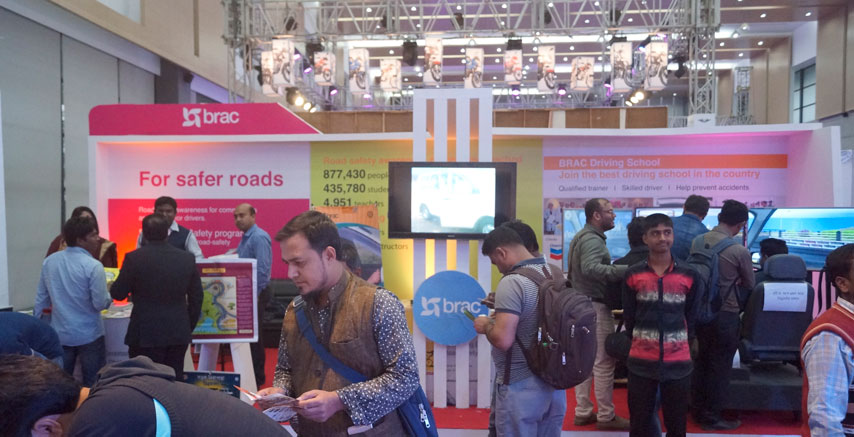
The first ever Indo-Bangla automotive show was held in Dhaka at the International Convention City Bashundhara (ICCB) from 2 - 4 February 2017 where BRAC was the only NGO to be invited as an exhibitor. BRAC's road safety programme and advocacy for social change jointly showcased their road safety interventions such as community road safety programme, BRAC Driving School and the Road Safety Dhaka mobile app. This was a large convention of big names from the automobile industry such as Honda, Yamaha, Maruti, TATA, TVS and Hero to name a few.
|
|
|
|
A photo exhibition on haor and wetlands kicks off
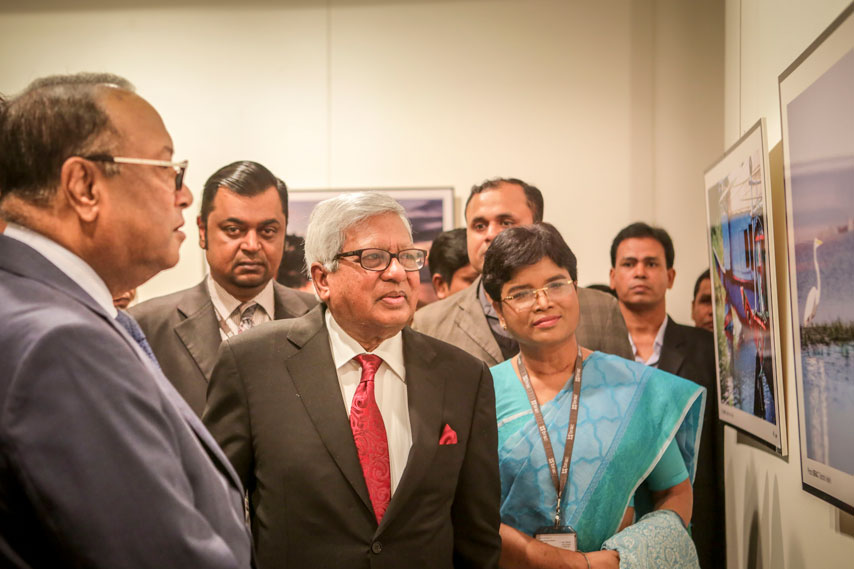
In celebration of the World Wetlands day, the initiative aims to capture the beauty and livelihoods of the people living in haor and wetland areas of Bangladesh
A three-day-long photo exhibition ‘Jol oJoner Golpo’ on the lifestyle and livelihoods of the haor and wetlands in Bangladesh starts from today, 2 February, at the Shilpakala Academy to mark the World Wetlands Day 2017. This year’s theme is wetlands for disaster risk reduction.
Honourable state minister of Water Resources Mr Muhammad Nazrul Islam, Bir Protik, MP and BRAC founder and chairperson Sir Fazle Hasan Abed, KCMG inaugurated the exhibition.
A collaborative initiative of Bangladesh Haor and Wetlands Development under the ministry of Water Resources and BRAC, this exhibition aims to highlight the unique ecological features of haor and wetlands, and the lifestyle and struggles of the people living in this region.
Praising the initiative the state minister Mr Mr Muhammad Nazrul Islam, Bir Protik, MP said, “BRAC’s role in improving lives and livelihoods of the people of haor and wetlands is praiseworthy. But there are scopes for more collaborative work and private-government partnerships in this sector will really make a difference.”
The exhibition is open for all from 2-4 February at Gallery-1 of the Shilpakala Academy. During the inauguration, Sir Fazle said, “Ecology, bio-diversity and the lives of the people living in this region depend on the usage and conservation of the wetlands.
Though Bangladesh succeeded in achieving most of the MDGs, the haor and wetlands have not been able to develop accordingly. BRAC is working in this area along with the government, but it’s still not meeting the demands. Coordination amongst the NGO sector and the government is necessary to improve people’s lives in this region.”
Join the world’s biggest family

